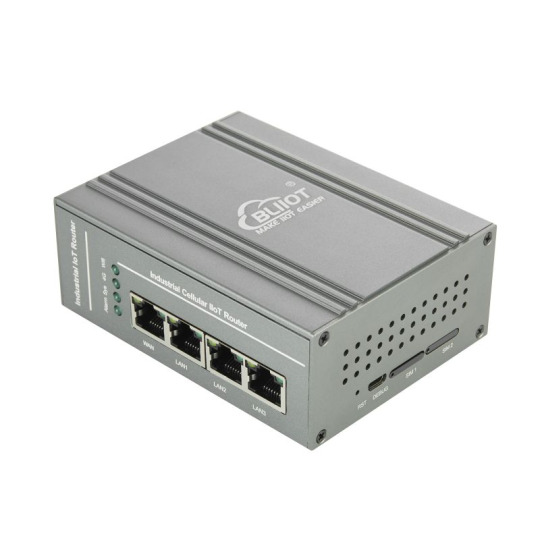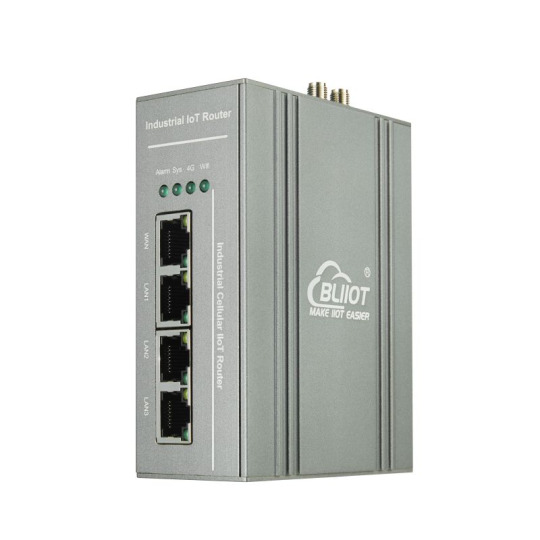#multi wan router
Explore tagged Tumblr posts
Text
#The new generation router#based on ARM architecture multi-core processors and non blocking switching architecture#is applied in SD-WAN solution scenarios#integrating routing and switching security to meet the needs of enterprise customers for network equipment routing and switching security.#small and medium-sized enterprise headquarters or branches#and other scenarios.
0 notes
Text
youtube
0 notes
Text
CPE Chip Market Analysis: CAGR of 12.1% Predicted Between 2025–2032

MARKET INSIGHTS
The global CPE Chip Market size was valued at US$ 1.58 billion in 2024 and is projected to reach US$ 3.47 billion by 2032, at a CAGR of 12.1% during the forecast period 2025-2032. This growth trajectory aligns with the broader semiconductor industry expansion, which was valued at USD 579 billion in 2022 and is expected to reach USD 790 billion by 2029 at a 6% CAGR.
CPE (Customer Premises Equipment) chips are specialized semiconductor components that enable network connectivity in devices such as routers, modems, and gateways. These chips power critical functions including signal processing, data transmission, and protocol conversion for both 4G and 5G networks. The market comprises two primary segments – 4G chips maintaining legacy infrastructure support and 5G chips driving next-generation connectivity with higher bandwidth and lower latency.
Market expansion is being propelled by three key factors: the global rollout of 5G infrastructure, increasing demand for high-speed broadband solutions, and the proliferation of IoT devices requiring robust connectivity. However, supply chain constraints in the semiconductor industry and geopolitical factors affecting chip production present ongoing challenges. Major players like Qualcomm and MediaTek are investing heavily in R&D to develop advanced CPE chipsets, while emerging players such as UNISOC and ASR are gaining traction in cost-sensitive markets. The Asia-Pacific region dominates production and consumption, accounting for over 45% of global CPE chip demand in 2024.
MARKET DYNAMICS
MARKET DRIVERS
5G Network Expansion Accelerates Demand for Advanced CPE Chips
The global transition to 5G networks continues to drive exponential growth in the CPE chip market. As telecom operators roll out next-generation infrastructure, the demand for high-performance customer premise equipment has surged by over 40% in the past two years. Modern 5G CPE devices require specialized chipsets capable of supporting multi-gigabit speeds, ultra-low latency, and massive device connectivity. Leading chip manufacturers are responding with integrated solutions that combine baseband processing, RF front-end modules, and AI acceleration. For instance, Qualcomm’s latest 5G CPE platforms deliver 10Gbps throughput while reducing power consumption by 30% compared to previous generations.
IoT Adoption Creates New Growth Avenues for CPE Chip Vendors
The proliferation of Internet of Things (IoT) applications across smart cities, industrial automation, and connected homes is generating significant opportunities for CPE chip manufacturers. With over 15 billion IoT devices projected to connect to networks by 2025, telecom operators require CPE solutions that can efficiently manage diverse traffic patterns and quality-of-service requirements. This has led to the development of specialized chipsets featuring advanced traffic management, edge computing capabilities, and enhanced security protocols. Recent product launches demonstrate this trend, with companies like MediaTek introducing chips optimized for IoT gateways that support simultaneous connections to hundreds of endpoints while maintaining reliable performance.
Remote Work Infrastructure Investments Fuel Market Expansion
The permanent shift toward hybrid work models continues to stimulate demand for enterprise-grade CPE solutions. Businesses worldwide are upgrading their network infrastructure to support distributed workforces, driving a 25% year-over-year increase in CPE deployments. This trend has particularly benefited manufacturers of chips designed for business routers and SD-WAN appliances, which require robust performance for VPNs, unified communications, and cloud applications. Leading semiconductor firms have responded with system-on-chip solutions integrating Wi-Fi 6/6E, multi-core processors, and hardware-accelerated encryption to meet these evolving requirements.
MARKET RESTRAINTS
Supply Chain Disruptions Continue to Challenge Production Stability
Despite strong demand, the CPE chip market faces persistent supply chain constraints that limit growth potential. The semiconductor industry’s reliance on advanced fabrication nodes has created bottlenecks, with lead times for certain components extending beyond 12 months. These challenges are compounded by geopolitical tensions affecting rare earth material supplies and export controls on specialized manufacturing equipment. While the situation has improved from pandemic-era shortages, inventory levels remain below historical averages, forcing many CPE manufacturers to implement allocation strategies and redesign products with available components.
Rising Component Costs Squeeze Profit Margins
Escalating production expenses present another significant restraint for CPE chip suppliers. The transition to more advanced process nodes has increased wafer costs by approximately 20-30% across the industry. Additionally, testing and packaging expenses have risen due to higher energy prices and labor costs. These factors have compressed gross margins, particularly for mid-range CPE chips where pricing pressure is most intense. Manufacturers are responding by optimizing chip architectures, consolidating IP blocks, and investing in yield improvement initiatives, but these measures require significant R&D expenditures that may take years to yield returns.
Regulatory Complexity Slows Time-to-Market
The CPE chip industry faces growing regulatory scrutiny that delays product launches and increases compliance costs. New spectrum regulations, cybersecurity requirements, and equipment certification processes have extended development cycles by 3-6 months on average. In particular, the automotive and industrial sectors now demand comprehensive safety certifications that require extensive testing and documentation. These regulatory hurdles disproportionately affect smaller chip vendors who lack dedicated compliance teams, potentially limiting innovation and competition in certain market segments.
MARKET CHALLENGES
Technology Complexity Increases Design and Validation Costs
Modern CPE chips incorporate increasingly sophisticated architectures that pose significant engineering challenges. Designs now routinely integrate multiple processor cores, AI accelerators, and specialized radio interfaces, requiring advanced simulation tools and verification methodologies. The associated R&D costs have grown exponentially, with some 5G chip development projects now exceeding $100 million in budget. This creates a high barrier to entry for potential competitors and forces established players to carefully prioritize their product roadmaps. Furthermore, the complexity makes post-silicon validation more difficult, potentially leading to costly respins if critical issues emerge late in the development cycle.
Talent Shortage Constrains Innovation Capacity
The semiconductor industry’s rapid expansion has created intense competition for skilled engineers, particularly in critical areas like RF design, digital signal processing, and physical implementation. CPE chip manufacturers report vacancy rates exceeding 30% for certain technical positions, with hiring cycles stretching to 9-12 months for specialized roles. This talent crunch limits companies’ ability to execute aggressive product roadmaps and forces difficult tradeoffs between projects. While firms are investing in training programs and academic partnerships, the pipeline for experienced chip designers remains insufficient to meet current demand.
Standardization Gaps Create Integration Headaches
The evolving nature of 5G and edge computing technologies has led to fragmented standards across different markets and regions. CPE chip vendors must support multiple protocol variants, frequency bands, and security frameworks, complicating both hardware and software development. This fragmentation increases testing overhead and makes it difficult to achieve economies of scale across product lines. While industry groups continue working toward greater harmonization, interim solutions often require additional engineering resources to implement customized features for specific customers or geographies.
CPE CHIP MARKET TRENDS
5G Network Expansion Accelerates Demand for Advanced CPE Chips
The rapid global deployment of 5G networks is significantly driving the CPE (Customer Premises Equipment) chip market, with the segment projected to grow at over 30% CAGR through 2032. Telecom operators worldwide invested nearly $280 billion in 5G infrastructure in 2023 alone, creating substantial demand for compatible CPE devices. Chip manufacturers are responding with innovative solutions featuring multi-band support and improved power efficiency, with next-generation modem-RF combos now achieving throughputs exceeding 7Gbps. While 4G CPE chips still dominate current installations, representing about 65% of 2024 shipments, 5G solutions are rapidly gaining share due to superior performance in high-density urban environments.
Other Trends
Smart Home Integration
The proliferation of IoT devices in residential settings, expected to reach 29 billion connected units globally by 2027, is creating new requirements for CPE chips that can handle simultaneous broadband and IoT traffic management. Modern gateway solutions now incorporate AI-powered traffic prioritization and mesh networking capabilities to maintain quality of service across dozens of connected devices. Semiconductor vendors have responded with system-on-chip (SoC) designs integrating Wi-Fi 6/6E, Bluetooth, and Zigbee radios alongside traditional cellular modems. North America leads this adoption curve, with over 75% of new home internet subscriptions in 2023 opting for smart gateway solutions compared to just 32% in 2020.
Edge Computing and Network Virtualization Impact Chip Designs
Emerging virtualization technologies are reshaping CPE architectures, creating demand for chips with enhanced processing capabilities beyond traditional modem functions. Virtual CPE (vCPE) solutions now account for 18% of business installations, requiring chipsets that can efficiently run containerized network functions (CNFs) while maintaining low power envelopes. The enterprise segment has proven particularly receptive, with large-scale adoption in multi-tenant office buildings and smart city applications. Meanwhile, silicon designed for edge computing applications is increasingly incorporating hardware acceleration blocks for AI inference, allowing real-time processing of video analytics and other bandwidth-intensive applications at the network periphery. This evolution has prompted traditional chip vendors to expand their portfolios through strategic acquisitions in the FPGA and specialty processor spaces.
COMPETITIVE LANDSCAPE
Key Industry Players
Innovation and Partnerships Fuel Growth in the CPE Chip Market
The global CPE (Customer Premises Equipment) chip market remains highly competitive, characterized by technological innovation and aggressive expansion strategies. Qualcomm dominates the market with its extensive portfolio of 4G and 5G chipsets, capturing approximately 35% revenue share in 2024. The company’s leadership stems from its strong foothold in North America and strategic partnerships with telecom operators.
MediaTek and Intel follow closely, collectively accounting for 28% market share, owing to their cost-effective solutions for emerging markets and industrial applications. These players continue investing heavily in R&D, particularly for energy-efficient 5G chips catering to IoT deployments and smart city infrastructure.
Chinese manufacturers like Hisilicon and UNISOC are rapidly gaining traction through government-supported initiatives and localized supply chains. Their aggressive pricing strategies and custom solutions for Asian markets have enabled 18% year-over-year growth in 2024, challenging established western players.
Meanwhile, specialized firms such as Eigencomm and Sequans are carving niche positions through innovative chip architectures optimized for low-power wide-area networks (LPWAN) and private 5G deployments. Their collaborations with network equipment providers have become crucial differentiators in this evolving landscape.
List of Key CPE Chip Manufacturers Profiled
Qualcomm Technologies, Inc. (U.S.)
UNISOC (Shanghai) Technologies Co., Ltd. (China)
ASR Microelectronics Co., Ltd. (China)
HiSilicon (Huawei Technologies Co., Ltd.) (China)
XINYI Semiconductor (China)
MediaTek Inc. (Taiwan)
Intel Corporation (U.S.)
Eigencomm (China)
Sequans Communications S.A. (France)
Segment Analysis:
By Type
5G Chip Segment Dominates the Market Due to its High-Speed Connectivity and Low Latency
The CPE Chip market is segmented based on type into:
4G Chip
5G Chip
By Application
5G CPE Segment Leads Due to Escalated Demand for High-Performance Wireless Broadband
The market is segmented based on application into:
4G CPE
5G CPE
By End User
Telecom Operators Segment Dominates with Growing Infrastructure Investments
The market is segmented based on end user into:
Telecom Operators
Enterprises
Residential Users
Regional Analysis: CPE Chip Market
North America The mature telecommunications infrastructure and rapid 5G deployments in the U.S. and Canada are fueling demand for high-performance 5G CPE chips, particularly from vendors like Qualcomm and Intel. With major carriers investing over $275 billion in network upgrades, chip manufacturers are prioritizing low-latency, power-efficient designs. However, stringent regulatory scrutiny on semiconductor imports creates supply chain challenges. The region also leads in IoT adoption, driving demand for hybrid 4G/5G chips in smart city solutions and enterprise applications. Local chip designers benefit from strong R&D ecosystems but face growing competition from Asian suppliers.
Europe EU initiatives like the 2030 Digital Compass (targeting gigabit connectivity for all households) are accelerating CPE chip demand, though adoption varies across nations. Germany and the U.K. lead in 5G CPE deployments using chips from MediaTek and Sequans, while Eastern Europe still relies heavily on cost-effective 4G solutions. Strict data privacy laws and emphasis on open RAN architectures are reshaping chip design requirements. The region faces headwinds from component shortages but maintains steady growth through government-industry partnerships in semiconductor sovereignty programs.
Asia-Pacific Accounting for over 60% of global CPE chip consumption, the region is driven by China’s massive “5G+” infrastructure push and India’s expanding broadband networks. Local giants HiSilicon and UNISOC dominate low-to-mid range segments, while South Korean/Japanese firms focus on premium chips. Southeast Asian markets show explosive growth (20%+ CAGR) due to rural connectivity projects. However, geopolitical tensions and import restrictions create supply volatility. Price sensitivity remains high, favoring integrated 4G/5G combo chips over standalone 5G solutions in emerging economies.
South America Limited 5G spectrum availability keeps the market reliant on 4G LTE chips, though Brazil and Chile are early adopters of 5G CPEs using ASR and MediaTek solutions. Economic instability and currency fluctuations hinder large-scale infrastructure investments, causing operators to prioritize cost-effective Chinese chip suppliers. The lack of local semiconductor manufacturing creates import dependency, but recent trade agreements aim to improve component accessibility. Enterprise demand for industrial IoT routers presents niche opportunities for mid-tier chip vendors.
Middle East & Africa Gulf nations (UAE, Saudi Arabia) drive premium 5G CPE adoption through smart city projects, leveraging Qualcomm and Eigencomm chips. Sub-Saharan Africa depends on affordable 4G solutions from Chinese vendors, with mobile network operators deploying low-power chips for extended coverage. While underdeveloped fiber backhaul limits 5G potential, satellite-CPE hybrid chips are gaining traction in remote areas. Political instability in some markets disrupts supply chains, though rising digitalization funds (like Saudi’s $6.4bn ICT strategy) indicate long-term growth potential.
Report Scope
This market research report provides a comprehensive analysis of the global and regional CPE Chip markets, covering the forecast period 2025–2032. It offers detailed insights into market dynamics, technological advancements, competitive landscape, and key trends shaping the industry.
Key focus areas of the report include:
Market Size & Forecast: Historical data and future projections for revenue, unit shipments, and market value across major regions and segments. The global CPE Chip market was valued at USD million in 2024 and is projected to reach USD million by 2032.
Segmentation Analysis: Detailed breakdown by product type (4G Chip, 5G Chip), application (4G CPE, 5G CPE), and end-user industry to identify high-growth segments and investment opportunities.
Regional Outlook: Insights into market performance across North America, Europe, Asia-Pacific, Latin America, and the Middle East & Africa, including country-level analysis where relevant. Asia-Pacific currently dominates the market due to rapid 5G adoption.
Competitive Landscape: Profiles of leading market participants including Qualcomm, UNISOC, ASR, Hisilicon, and MediaTek, including their product offerings, R&D focus, and recent developments.
Technology Trends & Innovation: Assessment of emerging technologies in semiconductor design, fabrication techniques, and evolving industry standards for CPE devices.
Market Drivers & Restraints: Evaluation of factors driving market growth such as 5G rollout and IoT expansion, along with challenges including supply chain constraints and regulatory issues.
Stakeholder Analysis: Insights for chip manufacturers, network equipment providers, telecom operators, investors, and policymakers regarding the evolving ecosystem.
Related Reports:https://semiconductorblogs21.blogspot.com/2025/06/fieldbus-distributors-market-size-and.htmlhttps://semiconductorblogs21.blogspot.com/2025/06/consumer-electronics-printed-circuit.htmlhttps://semiconductorblogs21.blogspot.com/2025/06/metal-alloy-current-sensing-resistor.htmlhttps://semiconductorblogs21.blogspot.com/2025/06/modular-hall-effect-sensors-market.htmlhttps://semiconductorblogs21.blogspot.com/2025/06/integrated-optic-chip-for-gyroscope.htmlhttps://semiconductorblogs21.blogspot.com/2025/06/industrial-pulsed-fiber-laser-market.htmlhttps://semiconductorblogs21.blogspot.com/2025/06/unipolar-transistor-market-strategic.htmlhttps://semiconductorblogs21.blogspot.com/2025/06/zener-barrier-market-industry-growth.htmlhttps://semiconductorblogs21.blogspot.com/2025/06/led-shunt-surge-protection-device.htmlhttps://semiconductorblogs21.blogspot.com/2025/06/type-tested-assembly-tta-market.htmlhttps://semiconductorblogs21.blogspot.com/2025/06/traffic-automatic-identification.htmlhttps://semiconductorblogs21.blogspot.com/2025/06/one-time-fuse-market-how-industry.htmlhttps://semiconductorblogs21.blogspot.com/2025/06/pbga-substrate-market-size-share-and.htmlhttps://semiconductorblogs21.blogspot.com/2025/06/nfc-tag-chip-market-growth-potential-of.htmlhttps://semiconductorblogs21.blogspot.com/2025/06/silver-nanosheets-market-objectives-and.html
0 notes
Text
What Are the Key Roles in IT Infrastructure Management?
In the modern business age of the digital world, IT Infrastructure Management is what keeps businesses running well. The task of IT infrastructure management entails efforts made in diverse areas, including the maintenance of network performance and protection of the data security. But what are exactly the major roles that make this ecosystem to be efficient?
What are the most central positions and responsibilities that propel up a reliable, safe and scalable IT infrastructure? Let us go over them at a time.

1. IT Infrastructure Manager
The head of the ladder is IT Infrastructure Manager. Such an individual is involved in planning, designing and executing the whole IT infrastructure of an organization. They make sure that every hardware, software, network as well as cloud-based service are in line with business objectives.
They have day to day tasks of budgeting IT resources, vendor selection, team management, decisions on upgrade or change of systems among others. They also liaise with the top level management to ensure that the roadmap of the infrastructure matches the growth strategies of the business.
2. Network Administrator
The Network Administrator has the duty to maintain the network systems in the company. These are local area networks (LAN), wide area networks (WAN), firewalls, routers and switches. It is their task to maintain continuous connectivity and solve any problems connected with network performance.
They can be found in the background, doing software update and vulnerability patching and management, and uptime. Businesses would be experiencing constant blackouts and jeopardized security without network administrators.
3. System Administrator
System Administrators are often mixed up with the network administrators, but they take more attention to the machines, operating systems and servers. They administer, modify, and guarantee stable performance of the computer systems particularly the multi-user computers such as servers.
General system admins are involved in a user setup, maintenance of accesses, backup, and system status. They also do software upgrades and repair hardware.
4. Database Administrator (DBA)
Most businesses rely on data in the world today. Database Administrator makes sure that vital information is stored, retrieved, and secured in a streamlined way. They keep up database platforms such as Oracle, SQL Server or MySQL, according to the requirements of the organization.
They clean up performances, configure backup and recovery procedures, apply data access control, and observe storage. They also collaborate with security departments in ensuring they guard information that may be accessed or lost without authorization.
5. Cloud Infrastructure Engineer
As other enterprises increasingly migrate to the cloud, the importance of a Cloud Infrastructure Engineer has gotten significant adoption. Such experts control systems operating in the cloud: AWS, Azure or Google Cloud.
They are to implement virtual servers, allow cloud security, cloud cost optimization, and deployment automation. They make sure that the organization takes advantage of the use of cloud technology in an effective way that neither performance nor security is affected.
6. IT Security Specialist
Cybersecurity is not an option anymore. IT Security Specialist is specialized in ensuring the safety of the infrastructure against threats, breach and vulnerability. They would watch networks and look at certain abnormal activities, use firewalls, and encrypt data, and they would make security audits frequently.
They also teach the other members of the team about good practices and adherence to regulations such as GDPR, HIPAA, etc.
7. Help Desk and Support Teams
The IT Support and Help Desk Teams are the ones who are frequently ignored, but at the same time, his workforce has to be part of the management of an infrastructure. The employees contact them when there are technical problems.
Such specialists are involved in password recovery, installation of software, and assistance. Proper support team eases productivity as issues are solved within the shortest time possible.
Conclusion
IT Infrastructure Management relies on all the diverse jobs dedicated to keep the system stable, performing well, and secure. All the job titles, be they network administrator, system admin, or cloud engineer are essential to guarantee a well-functioning technology foundation of an enterprise. The right team in the right place is not only important, but also necessary as the organizations keep on expanding and changing. Knowledge of these top functions will help businesses to organize their IT departments, prevent their outages, as well as being ready to meet any technological needs in future.
1 note
·
View note
Text
Cloud Networking Market Innovation Surges as Businesses Prioritize Scalable Secure Cloud Network Solutions
The cloud networking market is undergoing a significant transformation, driven by the increasing demand for scalable, agile, and cost-efficient networking solutions. Cloud networking refers to the use of cloud-based services and infrastructure to manage and deliver network functions such as connectivity, security, and performance management. As enterprises continue to embrace digital transformation, cloud networking has become a foundational component in achieving operational efficiency, innovation, and competitiveness.

Market Overview
The global cloud networking market has seen rapid growth in recent years. This expansion is primarily fueled by the proliferation of cloud-based applications, the shift towards hybrid and multi-cloud environments, and the rising need for improved network agility and automation. Organizations are moving away from traditional on-premises networking models and investing in cloud-native networking solutions that offer on-demand scalability and centralized control.
Key industry players such as Cisco, Amazon Web Services (AWS), Microsoft Azure, Google Cloud, and IBM are continuously innovating and expanding their cloud networking portfolios. These companies are integrating artificial intelligence (AI), machine learning (ML), and automation capabilities into their networking services, which has enhanced network visibility, threat detection, and overall performance.
Market Drivers
Several critical factors are propelling the growth of the cloud networking market:
Increased Adoption of Cloud Services: As more businesses migrate their workloads to the cloud, the demand for secure and reliable cloud networking infrastructure continues to rise.
Remote Work and BYOD Trends: The global shift to remote and hybrid work environments has underscored the need for scalable cloud networking that supports seamless access to resources from any location or device.
Edge Computing and IoT Integration: The rise of edge computing and Internet of Things (IoT) devices has led to the need for decentralized networking models, further increasing the demand for cloud-based network management tools.
Security and Compliance Requirements: Modern cloud networking solutions offer enhanced security features, including network segmentation, zero-trust models, and compliance monitoring, making them ideal for organizations in regulated industries.
AI and Automation Integration: The integration of AI and automation into cloud networking platforms is enabling predictive analytics, self-healing networks, and automated troubleshooting, which reduce operational costs and enhance user experiences.
Market Segmentation
The cloud networking market can be segmented based on:
Deployment Type: Public cloud, private cloud, and hybrid cloud.
Component: Solutions (e.g., SD-WAN, cloud routers, cloud firewalls) and services (e.g., consulting, integration).
Organization Size: Small and Medium Enterprises (SMEs) and large enterprises.
End-User Industry: IT & telecom, BFSI, healthcare, retail, manufacturing, and government.
Among these, the hybrid cloud deployment model is gaining significant traction due to its flexibility, scalability, and cost-efficiency. Additionally, the IT and telecom sector remains the largest consumer of cloud networking technologies, followed closely by the BFSI and healthcare sectors.
Regional Insights
North America currently dominates the cloud networking market, owing to the presence of leading technology providers and high adoption of cloud computing in the region. However, the Asia-Pacific (APAC) region is expected to witness the fastest growth during the forecast period, driven by rapid digitalization in countries like China, India, and Japan. Governments in these regions are also heavily investing in cloud infrastructure and smart city projects, further boosting market potential.
Challenges and Opportunities
Despite the numerous benefits, the cloud networking market faces several challenges. Data privacy concerns, legacy system integration, and complex compliance requirements continue to hinder seamless cloud network adoption. Additionally, ensuring consistent network performance across geographically distributed environments remains a critical issue.
However, these challenges also open up new opportunities. There is a growing market for cloud-native security tools, network analytics platforms, and interoperability solutions that address these pain points. Startups and niche players focusing on AI-driven cloud networking innovations are also expected to play a pivotal role in shaping the market's future.
Future Outlook
The future of the cloud networking market looks promising. As technologies like 5G, AI, and blockchain continue to evolve, they will reshape the way cloud networks are designed and managed. Enterprises will increasingly adopt software-defined networking (SDN) and network function virtualization (NFV) to improve network flexibility and reduce infrastructure costs.
By 2030, the cloud networking market is expected to become a central enabler of enterprise digital ecosystems, supporting innovations in everything from autonomous systems to immersive virtual environments. Organizations that invest in robust, secure, and intelligent cloud networking infrastructure today will be better positioned to thrive in the digital economy of tomorrow.
0 notes
Text
Building a Robust Future: Networking Infrastructure at RitchField Network Solutions
In today’s hyper-connected world, robust networking infrastructure is the foundation of every successful digital enterprise. At RitchField Network Solutions, we understand that a reliable, secure, and scalable network is not just an operational requirement—it's a strategic asset.

Our networking infrastructure is designed with the highest standards of performance and security in mind. From core routers to cloud-managed switches, every component is chosen to deliver maximum uptime, speed, and efficiency. We leverage the latest in networking technologies such as SD-WAN, fiber-optic connectivity, and next-generation firewalls to ensure our systems are not only fast but also secure against evolving cyber threats.
One of the key pillars of our infrastructure is scalability. As client demands grow, our systems are capable of expanding seamlessly. Whether it’s onboarding a new remote office or deploying additional servers, our network is engineered to adapt without disruptions. Our infrastructure is also cloud-integrated, allowing for hybrid deployment models that offer flexibility and cost savings.
Security is another cornerstone of RitchField’s network strategy. Our infrastructure includes multi-layered protection with intrusion detection systems, encrypted communications, and real-time threat monitoring. This ensures that client data and internal operations remain protected around the clock.
Moreover, redundancy and disaster recovery are built into every level of our architecture. With multiple data paths, failover protocols, and geographically distributed data centers, we ensure continuous service availability—even during unexpected outages.
At RitchField, we also believe in proactive management. Through continuous network monitoring and regular performance audits, our IT teams can quickly identify and address potential issues before they affect end-users. This commitment to excellence is what sets us apart in a competitive landscape.

In essence, RitchField Network Solutions isn’t just providing network infrastructure—we’re building the digital backbone that powers businesses into the future. With innovation, resilience, and security at our core, we are proud to be trusted partners in the digital transformation journey.
0 notes
Text
Hướng dẫn chọn Router cho doanh nghiệp – Top thiết bị đáng đầu tư
Trong thời đại số, một chiếc router chất lượng là yếu tố then chốt giúp doanh nghiệp duy trì kết nối ổn định, bảo mật dữ liệu và nâng cao hiệu suất làm việc. Bài viết này sẽ hướng dẫn bạn các tiêu chí quan trọng khi chọn router và gợi ý top thiết bị phù hợp cho doanh nghiệp.

Tiêu chí quan trọng khi chọn Router cho doanh nghiệp
1. Tốc độ truyền tải dữ liệu
Tốc độ truyền tải quyết định hiệu suất mạng, đặc biệt khi nhiều thiết bị kết nối cùng lúc. Router cần có tốc độ cao để tránh giật lag, đảm bảo trải nghiệm mượt mà cho các tác vụ như họp trực tuyến, truyền dữ liệu lớn hay truy cập ứng dụng đám mây.
2. Đa băng tần và phạm vi phủ sóng
Router hỗ trợ băng tần kép (2.4GHz và 5GHz) mang lại tốc độ nhanh và kết nối ổn định hơn. Doanh nghiệp nên ưu tiên các thiết bị có phạm vi phủ sóng rộng, đảm bảo tín hiệu mạnh mẽ ở mọi khu vực văn phòng.
3. Mức độ chịu tải
Router doanh nghiệp cần chịu tải tốt để đáp ứng nhu cầu của nhiều người dùng cùng lúc, từ duyệt web, tải dữ liệu đến xem video. Mức độ chịu tải cao giúp duy trì hiệu suất mạng ổn định ngay cả trong giờ cao điểm.
4. Hệ thống bảo mật
Bảo mật là yếu tố không thể xem nhẹ. Router cần tích hợp các tính năng như tường lửa, VPN, IDPS và giám sát nhật ký để bảo vệ mạng khỏi các mối đe dọa như hacker hay virus.
5. Hỗ trợ cổng quang SFP/SFP+
Cổng quang SFP/SFP+ cho phép truyền dữ liệu tốc độ cao và ổn định hơn so với cổng đồng. Tùy nhu cầu, doanh nghiệp có thể chọn router có một hoặc nhiều cổng quang để tối ưu hóa kết nối.
6. Khả năng mở rộng và quản lý
Router cần hỗ trợ mở rộng dễ dàng, cho phép thêm thiết bị mới vào mạng mà không ảnh hưởng hiệu suất. Tính năng quản lý linh hoạt giúp doanh nghiệp điều chỉnh và nâng cấp hệ thống mạng hiệu quả.
Top Router cho doanh nghiệp đáng đầu tư
Ubiquiti EdgeRouter ER-12PVới công suất hỗ trợ đến 600 người dùng, ER-12P phù hợp cho các doanh nghiệp lớn như khách sạn, trường học. Thiết bị có CPU 1GHz 4 nhân, 1GB RAM, 10 cổng RJ45 1Gb, hỗ trợ Multi-WAN, PoE, VPN và QoS, đảm bảo hiệu suất mạnh mẽ và quản lý linh hoạt.
Draytek Vigor 2927Phù hợp với doanh nghiệp vừa và nhỏ, Vigor 2927 cung cấp WAN kép, tường lửa mạnh mẽ, VPN và QoS. Thiết bị đảm bảo kết nối ổn định, bảo vệ mạng khỏi các cuộc tấn công và hỗ trợ quản lý băng thông hiệu quả.
MikroTik CCR2004-16G-2S+Với CPU 5 nhân 1.7GHz, 4GB RAM, 16 cổng Gigabit Ethernet và 2 cổng SFP+, CCR2004-16G-2S+ xử lý lượng lớn lưu lượng mạng. RouterOS v7 đa chức năng hỗ trợ định tuyến, cân bằng tải và tích hợp quản lý mạng.
Mua Router cho doanh nghiệp ở đâu chính hãng, giá tốt?
VoHoang.vn là địa chỉ uy tín cung cấp router chính hãng từ các thương hiệu như Ubiquiti, Draytek, MikroTik. Khi mua tại VoHoang.vn, bạn nhận được tư vấn miễn phí, bảo hành 12 tháng, đổi trả trong 5 ngày, giao hàng toàn quốc và nhiều ưu đãi hấp dẫn. Liên hệ qua hotline 0828.011.011 hoặc đến 23/7 Hòa Hưng, quận 10, TP HCM để được hỗ trợ.
Kết luận
Một router phù hợp sẽ giúp doanh nghiệp tối ưu hóa kết nối mạng, nâng cao hiệu suất và bảo mật dữ liệu. Hy vọng bài viết đã cung cấp thông tin hữu ích để bạn chọn được thiết bị phù hợp. Để được tư vấn thêm, hãy liên hệ VoHoang.vn ngay hôm nay!
Tìm hiểu thêm: https://vohoang.vn/router-cho-doanh-nghiep
1 note
·
View note
Text


🚀 Introducing the Upgraded R40 4G Industrial Router Built for demanding industrial environments, the R40 series combines high-speed 4G connectivity, dual-SIM redundancy, and multi-protocol support including Modbus and MQTT — all in a rugged aluminum alloy housing. Whether you need stable remote access for smart cities, power systems, or industrial automation, R40 delivers reliable communication, edge logic control, and flexible I/O options. 🌐 Dual WiFi (AP/STA) 🔌 3 LAN + 1 WAN with optional PoE 🛡️ IPsec, L2TP, OpenVPN 📡 RS485/RS232, DI/DO/AI (R40A/B models) 🌡️ Operates from -20°C to +65°C 👉 Ready for next-gen IIoT connectivity!
0 notes
Text
SD-WAN Decoded: Devices, Networks, Solutions, and How to Choose the Best Vendor
Businesses today demand agile, cost-effective, and high-performance networking solutions — and SD-WAN (Software-Defined Wide Area Network) delivers exactly that.

What Is an SD-WAN Device and How Does It Improve Network Performance?
An sd wan device is a hardware or virtual appliance that directs traffic across a wide area network (WAN) using software-defined networking (SDN) principles. Unlike traditional routers, an sd wan device intelligently routes traffic based on real-time conditions, optimizing speed and reliability. Businesses deploying an sd wan device experience reduced latency, improved application performance, and simplified network management — making it ideal for cloud-based operations.
How an SD-WAN Network Transforms Enterprise Connectivity
An sd wan network replaces legacy MPLS connections with a more flexible, cost-efficient, and high-performance alternative. Unlike traditional WANs, an sd wan network dynamically routes traffic across multiple connections (MPLS, broadband, LTE, 5G) for maximum uptime. Companies using an sd wan network benefit from enhanced security, centralized control, and seamless cloud integration — critical for modern digital businesses.
Top SD-WAN Solutions for Scalable and Secure Business Networks
The best sd wan solutions combine performance, security, and ease of management. Leading options like Cisco SD-WAN, VMware Velocloud, and Fortinet Secure SD-WAN integrate seamlessly with ACT Fibernet’s high-bandwidth connections. Key features to look for in sd wan solutions include:
Application-aware routing
Built-in security (firewall, encryption)
Cloud optimization
Why an SD-WAN Router Is Smarter Than Traditional Networking Hardware

What Is SD-WAN Used For? Key Applications and Business Benefits
SD-WAN is used for enhancing network agility, reducing costs, and improving cloud application performance. Enterprises deploy SD-WAN for:
Branch office connectivity (seamless multi-site networking)
Cloud migration (optimized SaaS & IaaS performance)
Disaster recovery (failover across multiple connections)
SD-WAN is used for replacing outdated networking models with a smarter, software-driven approach.
The Top SD-WAN Benefits Every Business Should Know
The sd wan benefits driving adoption include:
Cost savings (reduced reliance on MPLS)
Better performance (dynamic traffic routing)
Enhanced security (built-in encryption & threat detection)
Additional sd wan benefits include simplified management, scalability, and support for remote workforces — making it a must-have for modern enterprises.
Best SD-WAN Vendors: Comparing Leading Providers in 2024
The best sd wan vendors in India include:
Cisco (best for large enterprises)
Fortinet (top integrated security)
Versa Networks (strong multi-cloud support)
Pairing these with ACT Fibernet’s dedicated internet ensures maximum ROI.
How an SD-WAN ROI Calculator Helps Justify Your Investment
An sd wan roi calculator estimates cost savings, productivity gains, and reduced downtime when switching from MPLS to SD-WAN. By using an SD-WAN ROI calculator, businesses can quantify benefits like lower bandwidth costs, improved application performance, and reduced IT overhead. Most leading SD-WAN vendors provide free sd wan roi calculator to help decision-making.
Low-Cost SD-WAN Options for Small and Mid-Sized Businesses

The Future of Networking: How 5G SD-WAN Enhances Speed and Reliability
5g sd wan combines ultra-fast cellular connectivity with SD-WAN’s intelligent routing. Unlike traditional setups, 5G SD-WAN enables:
Instant failover (seamless switching to 5G during outages)
High-speed mobility (ideal for remote & field operations)
Edge computing support (lower latency for IoT & real-time apps)
As 5G expands, 5g sd wan will become a game-changer for industries like logistics, healthcare, and retail.
Final Thoughts
From SD-WAN devices and SD-WAN networks to low-cost SD-WAN and 5G SD-WAN, this technology is reshaping enterprise networking. Whether you need the best SD-WAN vendors or want to calculate savings with an SD-WAN ROI calculator, adopting the right SD-WAN solutions ensures a future-proof, high-performance network.
Ready to upgrade? Explore the best SD-WAN router and SD-WAN solutions for your business today!
0 notes
Text
Data Center Networking Market Research Report: Industry Size and Growth Projections 2032
Data Center Networking Market was worth USD 27.37 billion in 2023 and is predicted to be worth USD 76.87 billion by 2032, growing at a CAGR of 12.19% between 2024 and 2032.
The Data Center Networking Market is experiencing unprecedented growth, driven by increasing cloud adoption, rising data traffic, and the expansion of AI-driven applications. Enterprises and service providers are investing heavily in advanced networking solutions to meet the surging demand for high-speed, low-latency data transfer. As digital transformation accelerates, data centers are evolving to ensure seamless connectivity and scalability.
The Data Center Networking Market continues to expand as organizations prioritize hybrid cloud deployments, automation, and software-defined networking (SDN). With the growing need for efficient data management and security, companies are integrating high-performance networking technologies to enhance operational efficiency. The rise of edge computing, 5G, and IoT further fuels the demand for robust and agile data center infrastructure.
Get Sample Copy of This Report: https://www.snsinsider.com/sample-request/3802
Market Keyplayers:
IBM Corporation
HP Development Company
Hitachi Data Systems Corporation
Vmware, Inc.
Broadcom Corp
Juniper Networks Inc.
Market Trends
Adoption of SDN and Network Virtualization – Enterprises are shifting towards SDN to enhance flexibility, reduce costs, and optimize network performance.
Rising Demand for High-Speed Connectivity – The need for ultra-low latency and high bandwidth drives the adoption of fiber-optic networking and next-generation Ethernet solutions.
Edge Computing and 5G Expansion – Decentralized data processing and 5G networks require more efficient data center networking infrastructure.
AI and Automation Integration – Intelligent automation and AI-driven network management improve efficiency, security, and predictive maintenance in data centers.
Enquiry of This Report: https://www.snsinsider.com/enquiry/3802
Market Segmentation:
By Component
Hardware
Storage Area Network (SAN)
Application Delivery Controllers (ADC)
Ethernet Switches
WAN Optimization Equipment
Network Security Equipment
Routers
Others (Firewalls, etc.)
Services
Professional Services
Managed Services
By End-User
BFSI
IT & Telecom
Healthcare
Retail
Education
Government
Media & Entertainment
Manufacturing
Market Analysis
Key growth factors include:
Cloud Computing Dominance – Public, private, and hybrid cloud models continue to expand, driving data center upgrades.
Surge in Hyperscale Data Centers – Leading cloud providers are building massive facilities to handle growing data workloads.
Cybersecurity Enhancements – Advanced encryption, zero-trust models, and AI-driven security solutions are becoming essential in network infrastructure.
Scalability and Energy Efficiency – Companies are focusing on green data centers and energy-efficient networking solutions to reduce operational costs.
Future Prospects
The future of the Data Center Networking Market will be shaped by emerging technologies and evolving business demands. Next-generation networking solutions will prioritize efficiency, automation, and security. Key developments expected in the industry include:
Expansion of AI-Driven Networking – AI-powered solutions will enhance real-time network optimization and threat detection.
Edge Data Centers Growth – To support 5G and IoT applications, businesses will invest in localized data centers for faster processing.
Increased Adoption of Optical Networking – High-speed optical networks will become essential for seamless data transmission across global data centers.
Hybrid and Multi-Cloud Networking Evolution – Companies will adopt advanced networking strategies to ensure interoperability across diverse cloud environments.
Access Complete Report: https://www.snsinsider.com/reports/data-center-networking-market-3802
Conclusion
The Data Center Networking Market is poised for significant growth as enterprises adapt to the digital era. With increasing investments in cloud, AI, and high-speed networking, businesses will continue to innovate and expand their data center capabilities. As the demand for efficient, scalable, and secure networking solutions rises, the industry will witness continuous advancements, ensuring seamless data connectivity for the future.
About Us:
SNS Insider is one of the leading market research and consulting agencies that dominates the market research industry globally. Our company's aim is to give clients the knowledge they require in order to function in changing circumstances. In order to give you current, accurate market data, consumer insights, and opinions so that you can make decisions with confidence, we employ a variety of techniques, including surveys, video talks, and focus groups around the world.
Contact Us:
Jagney Dave - Vice President of Client Engagement
Phone: +1-315 636 4242 (US) | +44- 20 3290 5010 (UK)
0 notes
Text
Network Operations Question Criteria NetWare Windows Unix Linux Mac OSX Server Operating Systems NetWare Version 6 Windows Server 2008, 2012R2Unix Linux NetwareFedora , Ubuntu Network ServerMac OS X ServerPerformanceHighHighHighHighHighAcceptanceWideWideVery wide WideModestCostModerate-highModerate-highModerate-highLow-moderateModerate-highStabilityHighHighHighHighHighTCP/IP supportYesYesYesYesYesStrengthsNDS, file serverMicrosoft name, Application ServerStability, Speed, FlexibilityStability, cost, Speed, flexibilityStability, SpeedQuestion 2 LAN stands for local area network while WAN stands for Wide Area Network. LAN network covers small geographical area like homes, office or a school up to a range of 1km. Tamara, (2009) says that WAN covers a broad area of metropolitan, regional boundaries up to a distance of 10000km. LAN uses a peer to peer network topology while WAN, on the other hand, uses a Client to Server model of the topology. LAN uses Ethernet standard while WAN uses T1. LAN uses layer two devices switches and bridges and Layer 1 devices like hubs and repeaters. WAN mostly uses layer three devices like routers, multi-layer switches and other devices like ATM and Frame Relay switches. Question 3 The user that gave the request might not have correct access rights to the application given, and it will result into the request failing. The issues can be avoided by setting the client and server to be in the same Windows domain. Make sure the user id of the customer is configured on both the client and server computers. There might be a failed communication between the client and server due to faulty connection hardware or no internet. No connection problems can be avoided by first establishing if there is a link to the server through the ping command. Problems might arise from weak firewall configurations. Firewalls might deny a client access to certain resources on the server, (Tamara, 2009). The problem can be avoided by first disabling firewall to ascertain if that is the cause of the problem and then configuring the firewall setting for the client in question. The transmission might not be successful due to power or electricity interruptions of either the client or server or both. Power interruptions can be avoided by having power backups. Transmission problems might arise due to change of IP addresses. The problem can be solved when using DHCP by setting client lease time to at list 24hrs. The problem can also be solved assigning static IP addresses to client, server or both.Question 4 Setting up of the a WAN that covers a large area has a lot of challenges during the initial setup. The major challenges are staffing, existing applications, network equipment and managing connectivity outside of the primary organization location. Staffing and personnel implications to consider include; making sure that the correct employees with the required skills are available at every global location. The senior network designer should make sure there is constant communication with all the teams in all the locations. The personnel should have the correct motivation in terms of pay. Another staff implication from different regions is the situation of the working environment in their area. Barriers to an effective global team include: time restrictions where the working times are different which might create problems in coordination. Language barrier can also be a major challenge since there will be a lack of adequate understanding between the personnel. Other barriers include effective communication like challenges of video conferencing and coordination of all the staff and having the same schedule to adhere to is very hard.Question 5 Setting up an effective WAN network requires powerful equipment and servers to implement the network (Tamara, 2009). The devices that will be needed include; several workstations, printers Ethernet cables, layer three devices like routers and multilayer switches. Each location in Peru, France, Hungary will have several servers preferably windows server 2012. Tere shall be a windows server 2012 standard and data center edition. Since the main office will be in USA, the servers to be used will be mainly data center edition. Each of the global locations will have a primary server, file sharing server and print server. The location in the USA will also have a web server to handle the website of the company. Users in each location will be able to access specific files from any of the locations if they have the correct access rights. Read the full article
0 notes
Video
youtube
Factory Reset TP-Link Multi WAN Load balancer Router
0 notes
Text

RUTM52 DUAL 5G ROUTER
The RUTM52 is a future-proof 5G router designed for mission-critical applications, featuring dual 5G modems, multi-WAN capabilities, and 4G LTE Cat 20 fallback. With dual SIM slots, eSIM support, and compatibility with SA and NSA 5G architectures, it ensures high-speed, uninterrupted connectivity today and years ahead.
For more information, Visit: https://www.newtrend.ae/ Live chat: +971 507542792
#5GRouter#Networking#Connectivity#TechInnovation#MissionCritical#DualSIM#MultiWAN#eSIM#LTE#HighSpeedInternet#ITSolutions#FutureProof#SA#NSA#Teltonika#NewTrend
0 notes
Text
Forgot about this! Unity compromised it's native-multiplayer framework (unet) for some reason, sooooo s/o photon! Udp-packets ftw
youtube
Also, I made a multi-player Google-cardboard simulation (I believe it was 2021) but the presentation was so bad, it never "stuck" to my portfolio. Setting up port-forwarding in your router's settings (type in your ip-address) is not fun, but for some reason most networks are leery of the wan

whatever - I'm off work today, so I can post as please.

I generally dislike creativity, so I don't really have anything I want to program, story-wise, but maybe I can imagine something............... maybe a game/story thingy where everyone is a baby? Nahhh - uhhhh, maybe a game/story thing where x + 9 = 42? Nahhh. The democratic-agenda is fake, and I want reality, I think (therefore I am) lol.
0 notes